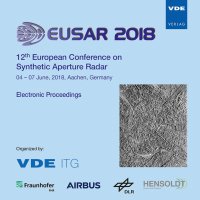SEASTAR: a new mission for high-resolution imaging of ocean surface current and wind vectors from space
Conference: EUSAR 2018 - 12th European Conference on Synthetic Aperture Radar
06/04/2018 - 06/07/2018 at Aachen, Germany
Proceedings: EUSAR 2018
Pages: 4Language: englishTyp: PDF
Personal VDE Members are entitled to a 10% discount on this title
Authors:
Gommenginger, Christine; Martin, Adrien (National Oceanography Centre, UK)
Chapron, Bertrand (Ifremer, France)
Marquez, Jose (Airbus Defence & Space, UK)
Brownsword, Christopher (Centre for Earth Observation Instrumentation, UK)
Buck, Christopher (European Space Agency, The Netherlands)
Abstract:
SEASTAR is a new satellite mission concept being proposed to the European Space Agency through the Earth Explorer 10 call for mission ideas. The scientific objectives of SEASTAR are to support oceanographic research of mesoscale and submesoscale processes, upper ocean dynamics and air-sea interactions with the delivery of highprecision high-resolution two-dimensional maps of total ocean surface current vectors and wind vectors at a spatial resolution of 1 km. The focus of the mission is on the scientifically and societally important global coastal zone, shelf-seas and marginal ice zones. SEASTAR consists of a single satellite carrying a single Ku-band dualpolarisation instrument payload based on an ATI-based solution with two squinted look-directions. It will provide for the first time observations of the total ocean current vector field including ageostrophic components, with coincident measurements of wind vectors and waves. The satellite uses a sun-synchronous orbit (SSO) with fast-revisit orbital phases (1-2 day repeat) alternating with medium-revisit orbits (5-20 days repeat). While there is no dependence on data from other satellites, there are scientific benefits from synergy with Sentinel-1 and Sentinel-3.


